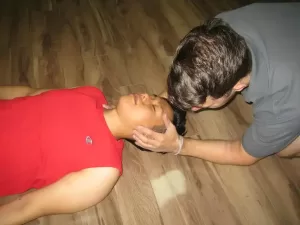
Seattle CPR is the best training provider you will find in Washington. Basic CPR classes are very popular because of the high quality of the programs and the cheap rates at which they are offered. Majority of the trainees are healthcare providers or students, but recently more and more parents and laymen have started taking up the general public CPR program. Getting certified in basic CPR training has been a popular requirement for high risk jobs, not just healthcare.
Enrollment is quite easy. Prospective students can head over to the Seattle CPR website and sign up using the online application form. Similarly, a visit in person during operating hours or over e-mail or telephone are other options when signing up.
Credentials and their validity
All of the classes offered at Seattle CPR are certification programs, with skills tests and written exams given after training is completed. Only one program – the general public program – does not require students to take the certification exams at the end of the training. All these credentials expire after two years. Students need to renew their credentials through a re-certification class before they expire.
Beginning CPR training
CPR involves the use of chest compressions and rescue breaths to try and restore normal circulation in the body. Cardiac arrest is a condition where the heart stops and cannot pump blood to the rest of the body. Defibrillation is also taught in the programs. AEDs are machines that send shocks of electricity to the heart in order to return it to its normal rhythm. They aren’t used when the heart is in asystole (flatline).
CPR training has two kinds: basic life support (BLS) and advanced life support (ALS). All ALS programs can only be taken by healthcare providers. One of the BLS programs is the general public course that has optional certification.
- Heartsaver CPR – 4 hours – teaches students how to perform adequate CPR during a one-person rescue. The use of defibrillators (AEDs) is also included, as are basic first aid skills. Certification is optional for this program.
- Heartsaver CPR (C) – 4.5 hours – teaches the curriculum of the first Heartsaver program to healthcare providers. The practical and written exam given at the end of training is mandatory. Students will only receive their certification is they pass the exam.
- BLS for HCPs – 4.5 hours – teaches students how to adequate perform CPR during both one and-two person rescues. The American Heart Association’s 2010 BLS guidelines are the core focus of this program. To apply, students need to pass the pre-test. Re-certification is offered, 4 hrs.
- ACLS – Advanced Cardiac Life Support – 2 days, 16 hours – teaches students how to use a crash cart in a clinical setting. Trainees are familiarized with bag valve masks, endotracheal tubes, and defibrillators (AEDs). Medication is also part of the ACLS program. Re-certification is 5-6 hours long.
- PALS – Pediatric Advanced Life Support – 2 days, 14 hours – focuses on using crash cart and its equipment and medication for pediatric patients. Pediatric patients are people younger than 18 years old. Giving CPR to an infant or a child is different from giving it to an adult. PALS update programs are 6 to 8 hours long.